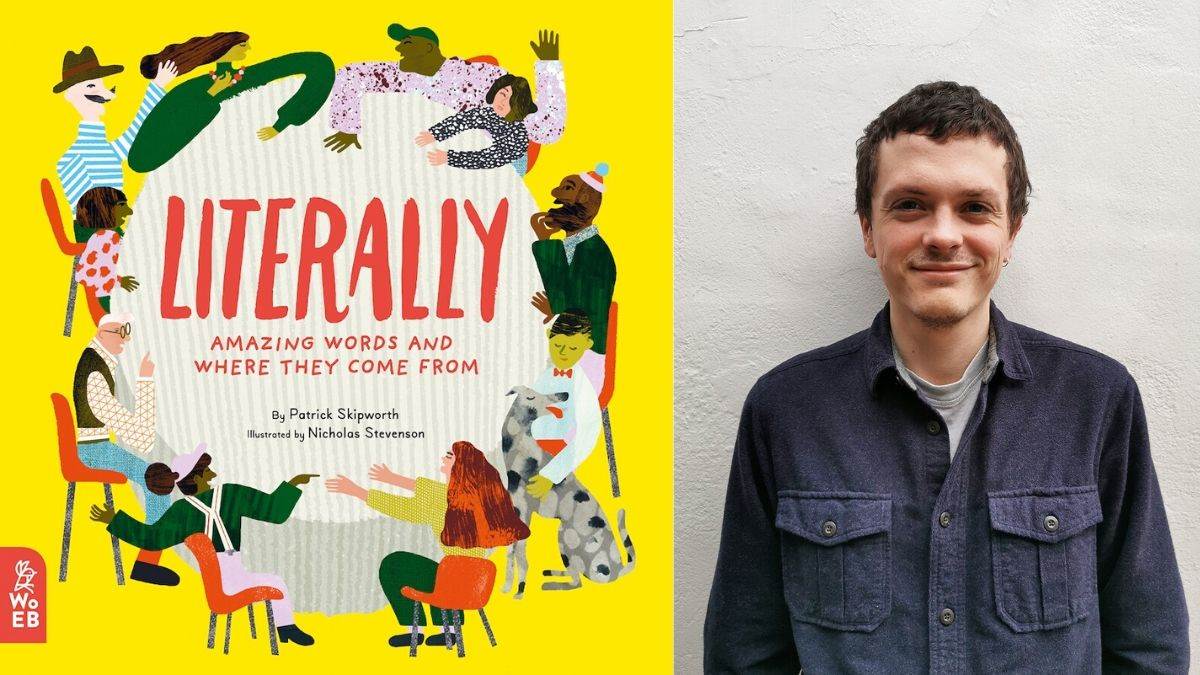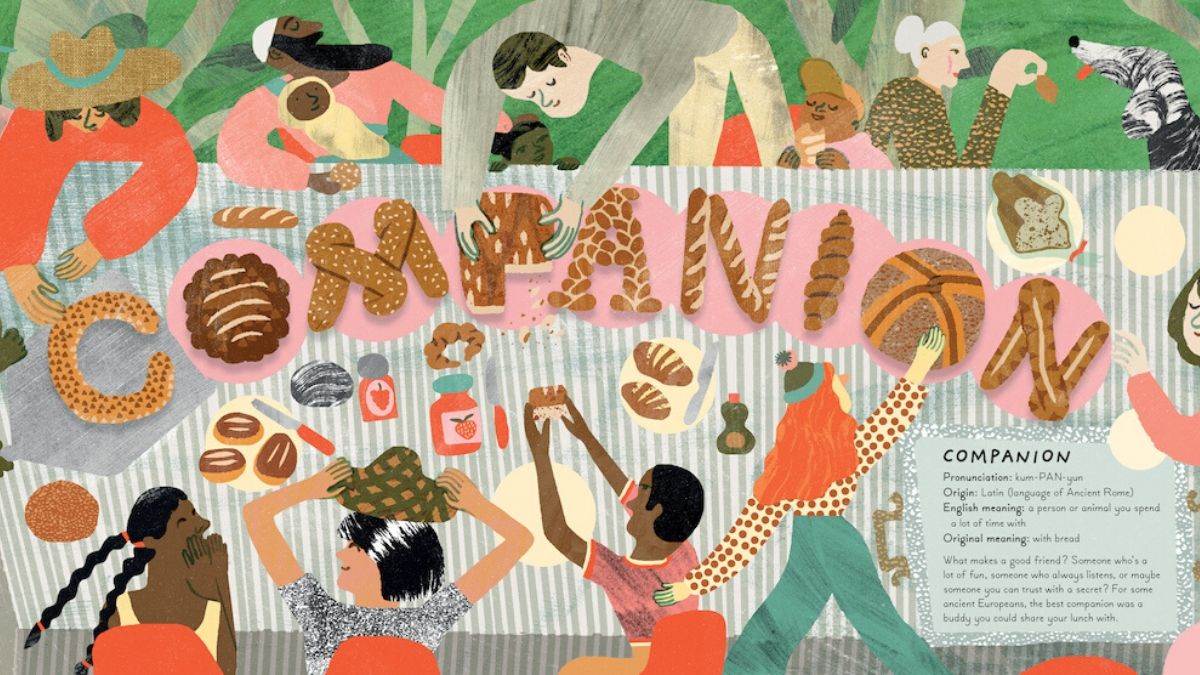The History of a Word
Published on: 02 July 2020
What's in a word? For author and linguist Patrick Skipworth, the hidden histories in our everyday conversation inspired him to write a book all about the many weird and wonderful languages we use.
 Author Patrick Skipworth and the cover of his book, Literally
Author Patrick Skipworth and the cover of his book, Literally
Every word contains a hidden story about the people who first spoke it and the place it originated from. For linguists, peeling back these layers to reveal the secrets inside is one of the thrills of studying languages. It can be a window on the past, present and future, and can sometimes succeed where historical sources fail. In Literally: Amazing Words and Where They Come From, I took a closer look at the stories behind twelve English words. I aimed to cover as diverse a group of topics and origins as I could in just a dozen words, from scientific history to the many places and languages English has had contact with through colonialism. In each case, the story of the word has been depicted in a magical style by illustrator Nicholas Stevenson to communicate the origin through imagery.
Accuracy is essential when working on a children’s book, so how can we be sure of these etymologies, some of which point back thousands of years? For English, the OED and its skilled lexicographers are a good place to start, or you could try Once Upon A Word by Jess Zafarris for an engaging etymological dictionary. But how are these origins understood in the first place?
Some historical sources can direct us straight to the origin of a word. Eponyms, words with their origins in people’s, places’ or things’ names, can be a fascinating area to use this approach. Often the subject in question is well documented – after all, they were well known enough to have their name become a word in itself. ‘Sideburns’ is a fun example. We can confidently say it arises from the national sensation which was the American Civil War general Ambrose Burnside’s impressive facial hair, and we can see linguistic mischief at play in the switching around of ‘burn’ and ‘side’ to match the ‘side-whiskers’ also popular at the time. Sometimes the origin story is clear: Mausolus was an ancient Greek ruler who built an enormous mausoleum; Ned Ludd smashed textile machinery and inspired the Luddite movement; and John Duns led a philosophical group of ‘dunces’, who were ridiculed by Protestants centuries later.
Some eponyms present stories that are harder to unravel. The journey from Étienne de Silhouette, 18th-century French finance minister, to ‘silhouette’ in English connects pre-Revolution politics, economics and artistic trends – it’s still not entirely agreed how the word entered into common usage.
Historical records can also point us to the creation of words. Many linguistic innovations are hard to track because they arise organically, but new words are thought up deliberately all the time too, particularly in science and technology. ‘Vaccination’ was coined by British doctor Edward Jenner when developing his smallpox vaccine from the milder cowpox disease. The virus’s scientific name was variolae vaccinae, ultimately from Latin vaccinus ‘from a cow’. It’s intriguing to watch a word take on a life of its own, and to think whether Jenner considered that vaccinus would spread around the world (look at Japanese wakuchin ‘vaccine’, for example).
 Illustration by Nicholas Stevenson
Illustration by Nicholas Stevenson
But sometimes the historical record isn’t enough for us to follow the threads back to the origin of the word, and this is where the most interesting etymological tool comes into play: reconstruction. We know that groups of languages can be related and share a common origin. French and Italian, for example, have remarkably similar grammatical features and basic vocabulary. Following this idea backwards, we can ‘reconstruct’ language when we don’t have a historical record. When applied correctly, this powerful tool can reveal lost histories. It’s also the methodology (the ‘comparative method’) which gives us the most significant chunk of etymologies for many languages, in particular fundamental vocabulary such as numbers or pronouns with origins far off in the past thousands of years ago, before written records existed.
How can I find the origin of a word?
Firstly, you’ll need some languages and historical records. That’s because you’ll be working backwards from your chosen word and ‘undoing’ all the linguistic changes as they happen in reverse, and the simplest way to find these changes is to compare related languages and historical sources from different times and places. Eventually you’ll return to a ‘proto-language’ – an unrecorded language that must theoretically have existed to lead to the recorded languages we do have.
How will my word have changed over time?
Usually these are sound changes. For example, a particular sound might change if it occurs between two particular consonants, or in a particular syllable position. The helpful thing about sound changes is that experiment has shown that they eventually occur everywhere – as long as the conditions are correct no word gets left out. So if a sound change happens once (or ideally a few times to be sure) at around the same time, then we can apply it in reverse to other words too. If we see ‘up’ changing to ‘op’ and ‘cup’ to ‘cop’, it would be reasonable to reconstruct ‘pup’ as the origin of ‘pop’. This simple idea is the key to reconstruction.
It’s through reconstruction that we can look at languages across the globe and show connections going back thousands of years. Take numbers, for example. By applying sound changes in reverse we can connect English five, Dutch vijf, Latin quinque, Russian pjat, Armenian hing, Hindi paanch, as well as ‘fist’, ‘punch’ (the drink), ‘Pentecost’ and many others to a proto-form, *penkwe (reconstructed words are indicated with an asterisk). Entire vocabularies containing hundreds of words from proto-languages (along with grammar) have been reconstructed this way.
For Literally, I am grateful for the support of a former colleague at Leiden University in the Netherlands where I studied linguistics. Linguistics is all about sharing research and knowledge – no individual alone could be expected to hold the amount of data and theory needed to study languages. It’s this sharing of information that leads to important discoveries, and it’s never too late to start studying languages and join the conversation.
Follow Patrick on Twitter here.
Topics: Features





